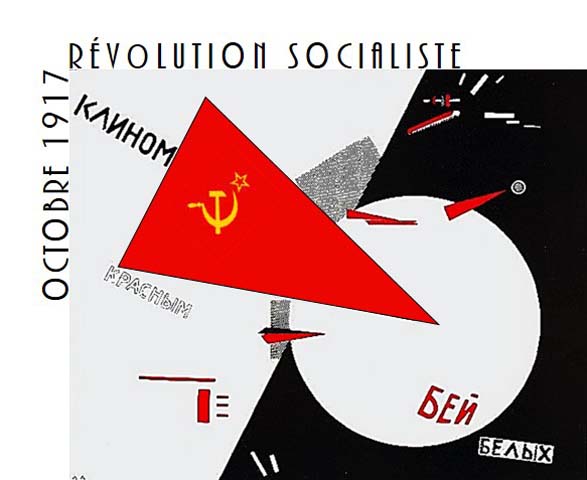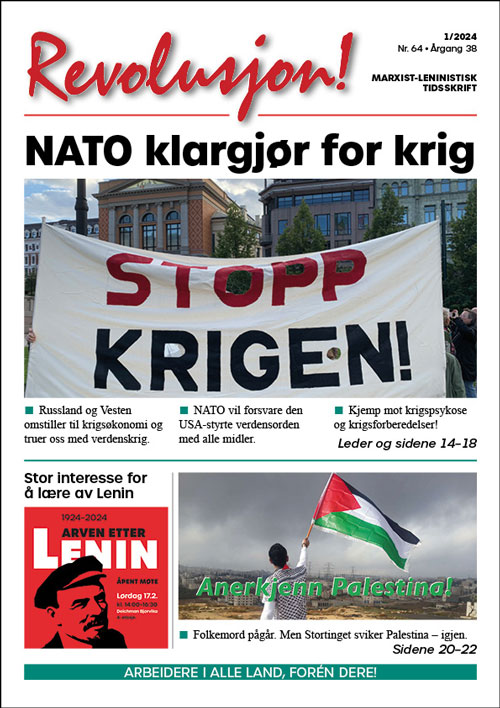
Comrades;
The October revolution in Russia 1917 proved that the working masses, with the working class in the lead, can in fact establish their own state power and develop the economy in a planned manner that is beneficial to the entire people. With a dedicated class party faithful to the teachings of scientific socialism at the head, the working class can defeat a class enemy holding all resources and means of power in its hands.
Furthermore, the revolution and the socialist construction that followed paved the way for a new era of fertile development within culture and science. In short, the socialist revolution showed the world that the imperialist bourgeoisie is a redundant class, entirely stripped of any progressive feature it had in former centuries when it confronted feudalism and backwardness. Today, it is the bourgeois class itself that represents backwardness and decay. ’Political reaction all along the line is a characteristic feature of imperialism’, as Lenin phrased it.
The revolution was in every sense also a matter of internationalism. As a neighbouring country, the labour movement in Norway was strongly influenced by October and Petrograd. The Norwegian labour party was the only mass party among the old Social Democratic parties in Western Europe that for a period joined the Comintern (1919–1923).
However, in all Europe apart from Russia, the revolutionary workers’ movement was either suppressed or it was diverted by syndicalist or reformist trends.
Social Democracy, albeit stained by its social-imperialist betrayal during the First World War, got a second chance by lending a hand to a crisis-ridden capitalist class petrified by fear of revolution. In return for class collaboration and putting an end the strike movements, the bourgeoisie offered social reforms and even political power to the parties of Social Democracy. The capitalists were compelled to make concessions, but the spectre of Red October was held at bay. Capitalism was safeguarded by the reformist Social Democracy. The paradox is that even the 'golden period' of social democracy and the ’welfare states’ in northern Europe are results of the October revolution, i.e. they were possible due to the fear of revolution and socialism amongst the ruling bourgeois class.
Communism and socialist revolution have been declared 'dead' for the last decades. Of course, this is wishful thinking on the part of the capitalists. Nonetheless, it is true that the revolution presently is not on the order of the day in Europe. The working class, the labour movement and the Marxist-Leninist parties are simply too weak following the backlash in the later part of the last century. For these reasons, the bourgeoisie during the last thirty years has intensified its attacks on the working class, on social benefits and on democratic rights. It no longer has need of the services of Social Democracy like it used to. It does not need to paralyze a revolutionary struggle that is hardly present.
This ought to be a lesson even for reformists. The absence of the fear of revolution gives no room of manoeuvre for reformist reforms or concessions from the proprietor classes. The capitalists will not share their profits if they do not have to!
For new generations to be able to place any hope in a future where peace, social welfare and civilization will prevail, there are only two options. Either they must revolt and the working class must seize state power; or they must convince the ruling class that the menace of revolution is rapidly approaching, and make them concede. In both cases the implication for the working class is that it must organize itself and prepare for the revolution.
Such are the lessons of Red October. Socialist revolution must again be put on the agenda.
Revolusjon, Oslo, November 8th 2017

